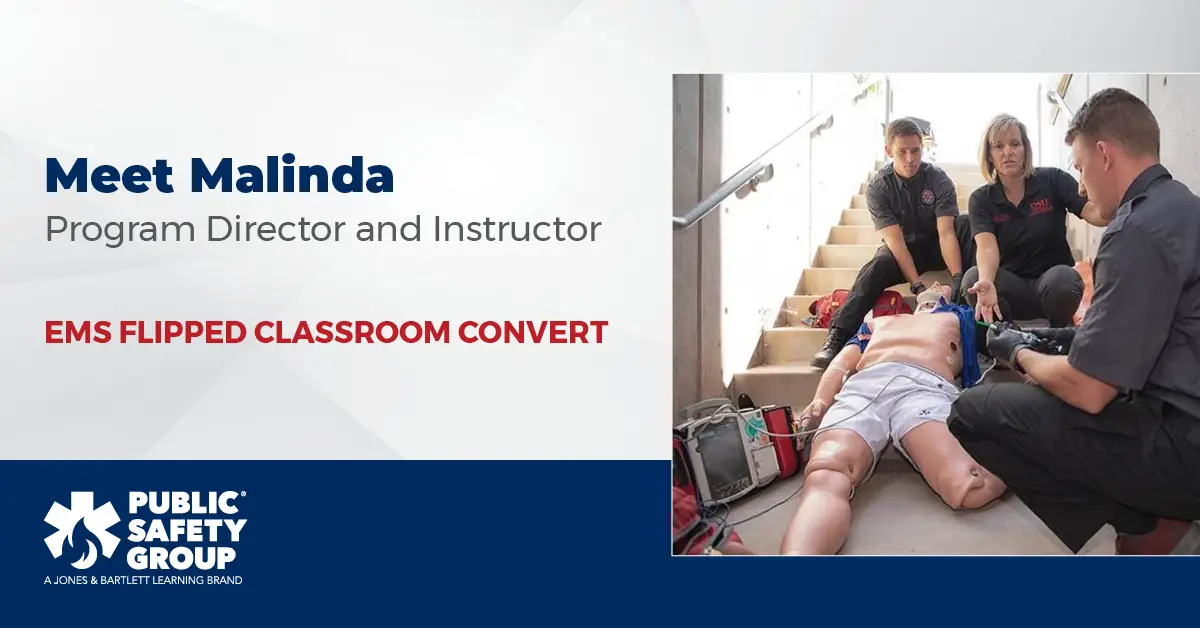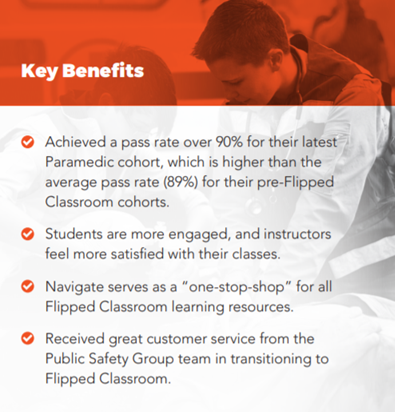How to Improve Course Outcomes with the EMS Flipped Classroom, According to This Program Director

What happens when a global pandemic upends your traditional EMT and Paramedic courses?
If you're Malinda Whipple, EMS Program Director and Instructor at Dixie University in Utah, you use it as an opportunity to pivot to "flipping" the classroom. After transitioning from a traditional classroom format to the EMT Flipped Classroom and Paramedic Flipped Classroom, students came prepared to discuss the material they learned at home and Whipple was able to use valuable in-class time to efficiently address difficult concepts and questions. Read on to learn how the new Flipped Classroom course structure helped with student engagement, pass rates, and instructor longevity...and why Whipple's students told her that "the Flipped Classroom model was 100% better than the traditional classroom learning model."
Founded in 1911, Dixie State University is a public university in St. George, Utah. The school hosts approximately 12,000 students pursuing associate’s, bachelor’s, and master’s degrees in a wide range of disciplines. Malinda Whipple is the school’s only fulltime Paramedic instructor, and she currently oversees the planning and delivery of the EMT, AEMT, and Paramedic programs at Dixie State University.
The Public Safety Group (PSG) team had the chance to speak with Whipple regarding her institution’s experience using the EMT and Paramedic Flipped Classroom in their programs:

What initially led you to consider using Flipped Classroom in your EMT and Paramedic courses?
When I started at Dixie State a couple years ago, one of my goals was to move to a Flipped Classroom learning structure. I saw the studies that show students are more engaged and test better under a Flipped Classroom structure, and when COVID-19 hit, it served as a catalyst for adopting Flipped Classroom. I contacted my rep, Makenna, and she helped our school with the upgrade to Flipped Classroom. It was a relatively painless transition.
What sets Flipped Classroom apart from other types of classroom learning styles?
I like how the Flipped Classroom program is formatted. It’s easy to understand and follow, and it’s easy to get other instructors oriented on how to deliver it. I manage a cadre of 10 adjunct instructors for EMT and Paramedic courses, and it was not difficult to get them trained and aligned on the Flipped Classroom structure. Additionally, I like how much more engaged my students are in Flipped Classroom. Having them come to class prepared to discuss the material they read about at home helps make class time more efficient since they can identify what they don’t understand in advance and ask questions about difficult material in-class as appropriate. In my opinion, education should be transactional between the student and the instructor; this means there needs to be payoff for both the student and the instructor. I’ve found that the Flipped Classroom structure not only helps with student engagement and testing, but also contributes to instructor longevity. My instructors have been more satisfied with their classes since making the switch.
What do you and your students like the most about the Navigate Learning Management System (LMS)?
While we haven’t utilized Navigate exactly as its intended, I do like that it’s a one-stop shop for all the resources in the course, including the eBook, flashcards, practice tests, and additional supplemental resources. I’m also a big fan of the Interactive Lectures; they do a good job delivering the content in each chapter in a more concise manner. My students seem to appreciate them as well.
Do you have any statistics or stories you can share regarding your success with Flipped Classroom?
Our latest paramedic cohort had a higher pass rate than the cohort a year ago that did not use Flipped Classroom. Their pass rate was well above 90%, while our average pre-Flipped Classroom pass rate was around 89%. When our latest cohort graduated, they told us that the Flipped Classroom model was 100% better than the traditional classroom learning model; they urged us to never change back!
On a personal note, one of my favorite things about Flipped Classroom is that we require students to bring a challenge question to each class. This helps launch the entire discussion for each class day, and it helps the instructor lead the class in a much more organic matter since the students have more responsibility for driving the discussion on their end.
Do you have any closing words you’d like to share with people considering using the Public Safety Group Flipped Classroom for their EMT and/or Paramedic courses?
The Dixie State University motto is “Active learning, active life.” Working with the PSG Flipped Classroom has enabled us to embody that motto and facilitate it for our students.
The customer service is also great. My rep, Makenna, was a big help in making the transition to Flipped Classroom.
Learn more about the EMT Flipped Classroom and Paramedic Flipped Classroom today.
For more information about how the Public Safety Group can help you reach your unique training goals, please contact your dedicated representative today.